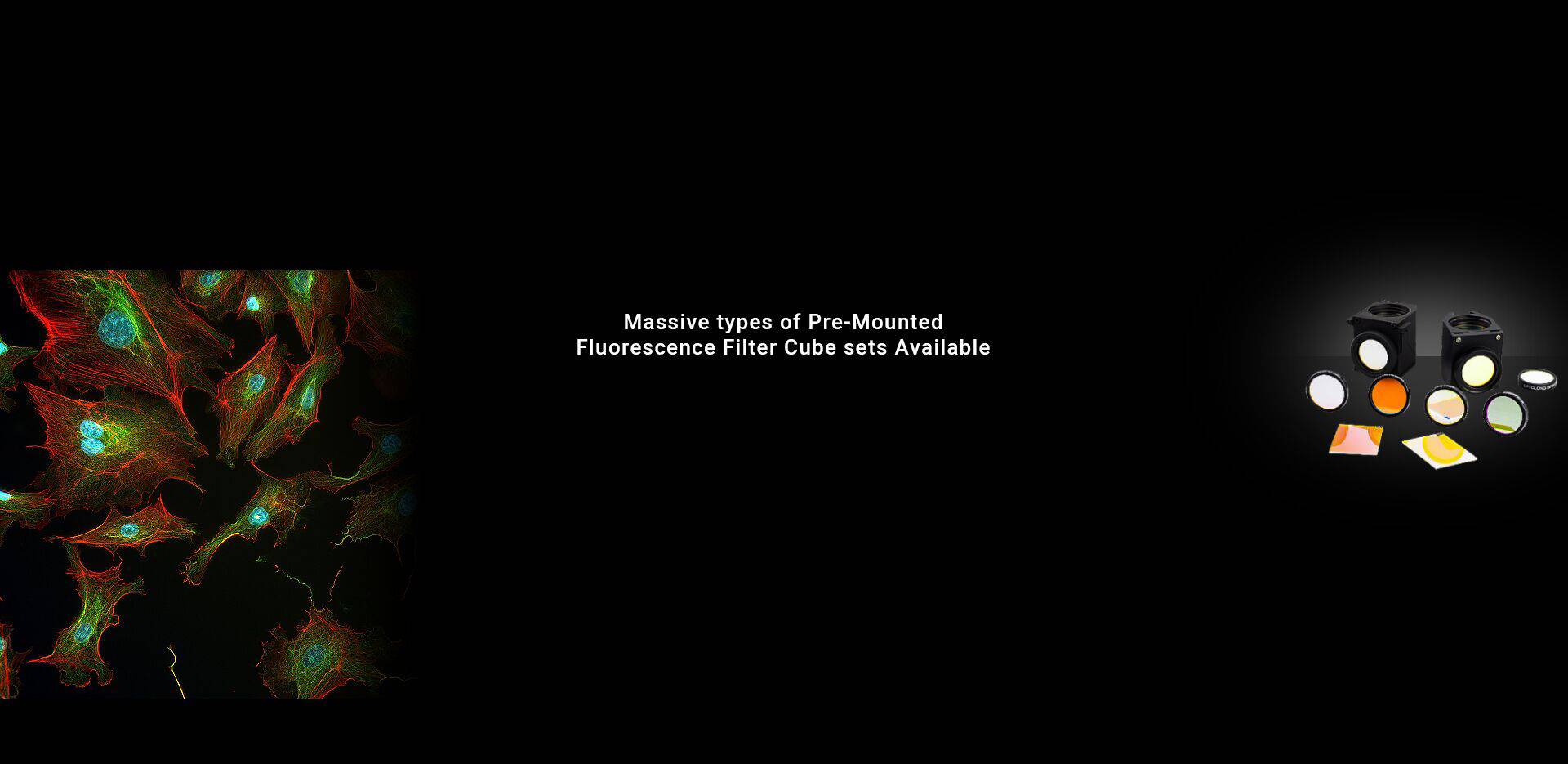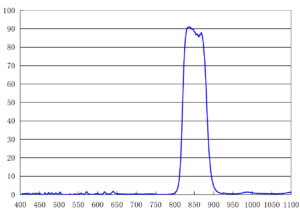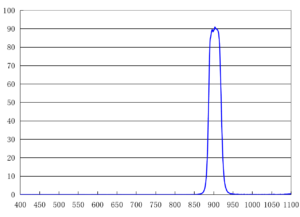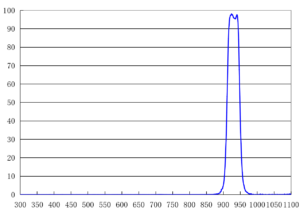-
850/60nm Bandpass Filter
Filter Type : IR Bandpass Filter CWL: 850nm FWHM: 60nm Filter Type IR Bandpass Filter Coating Type Hard Coating Center Wavelength 850nm FWHM Bandwidth 60nm Transmission Tpeak>85% Blocking OD>2 Blocking Band 400-1100nm (Out of passband) AOI 0 ±5 degrees Scratch-Dig 60/40,80/50 Substrate Fused Silica , B270 , Float Glass, Absorptive Glass Size Customize sizes as …
More Detail -
905/30nm Bandpass Filter
Filter Type : IR Bandpass Filter CWL: 905nm FWHM: 30nm Filter Type IR Bandpass Filter Coating Type Hard Coating Center Wavelength 905nm FWHM Bandwidth 30nm Transmission Tpeak>85% Blocking OD>2 Blocking Band 300-1100nm (Out of passband) AOI 0 ±5 degrees Scratch-Dig 60/40,80/50 Substrate Fused Silica , B270 , Float Glass, Absorptive Glass Size Customize sizes as …
More Detail -
940/40nm Bandpass Filter
Filter Type : IR Bandpass Filter CWL: 940nm FWHM: 40nm Filter Type IR Bandpass Filter Coating Type Hard Coating Center Wavelength 940nm FWHM Bandwidth 40nm Transmission Tpeak>85% Blocking OD>2 Blocking Band 300-1100nm (Out of passband) AOI 0 ±5 degrees Scratch-Dig 60/40,80/50 Substrate Fused Silica , B270 , Float Glass, Absorptive Glass Size Customize sizes as …
More Detail
-
The service life of Optolong single bandpass filters depends on factors such as frequency of use, environmental conditions, and maintenance. Typically Optolong filters, if used and maintained properly, will last for several years.
-
Selective wavelength transmission: They only allow a specific range of wavelengths to pass through, which is critical for applications requiring high-precision wavelength selection.
Improved signal-to-noise ratio: By filtering out unwanted wavelengths, these filters improve signal quality in spectroscopy, imaging, and other optical applications.
Versatility: Suitable for a variety of applications including fluorescence microscopy, remote sensing and optical communications.
Customization: They can be customized to specific wavelength requirements, providing flexibility for different scientific and industrial needs. -
Yes, bandpass filters can be used for fluorescence microscopy. They can selectively transmit specific wavelengths, enhancing the contrast and clarity of fluorescence images.
-
UV bandpass filters include filters with wavelengths of 222nm, 280nm, 304nm, 254nm and 340nm.
-
Yes, you can get bandpass filters for specific wavelength ranges. Whether it is an IR bandpass filter or a narrow bandpass filter, Optolong provides bandpass filters customized according to your required specifications, allowing you to accurately select the filter that meets your application needs.
-
To clean and maintain the band pass filter, follow these steps: Remove loose contaminants: Use a gentle stream of air to blow away any loosely attached contaminants from the filter surface. Hold the filter with gloves or finger cots.
Mechanical cleaning of stubborn dust or debris: If dust remains, use a rag or cotton swab moistened with methanol or acetone. Be careful to avoid excess solvent and use a new rag with each cleaning attempt.
Check the filter: After cleaning, check the filter under a bright light source to ensure cleanliness. Tilt and rotate the filter to view it from different angles.
Repeat for the other side: If necessary, repeat the cleaning process on the other side of the filter.



